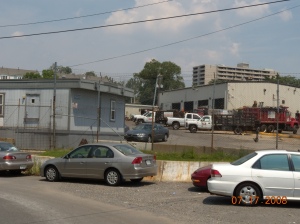The Office of Planning (OP) is proposing some changes to the Production, Distribution, and Repair (P) zones – what you may know as industrial zones.
Floor Area Ratio (FAR)
Industrially zoned land is some of the most inexpensive land in the District – that affordability often brings non-industrial uses, such as nightclubs, to PDR zoned properties. OP is proposing to limit the floor area that can be used for non-industrial uses. The current range for FAR is 3.0 to 6.0 in PDR zones, which does not limit square footage based on use. OP is proposing to limit the maximum allowable FAR for non-industrial uses to 1.0 to 4.0, depending on the PDR zone. The total FAR for a PDR zoned property would continue to range from 3.5 to 6.0, again depending on the zone, but with the square footage of non-industrial uses would be limited.
Green Area Ratio (GAR)
As part of the Zoning Regulations Review, OP is introducing the Green Area Ratio (GAR), which is a weighted score that serves as an environmental sustainability measure for a site. While the GAR requirement applies to industrially zoned land, OP is proposing some flexibility given the low-scale nature of many industrial buildings. Lots in PDR zones must obtain a GAR score of at least 0.3, with the exception of lots where the main building is one story (the required GAR score is reduced to 0.1) and lots where the main building is two stories (the required GAR score is reduces to 0.2).
Buffers
We have also proposed revisions to the buffering requirements for PDR zones to provide for adequate buffering and screening between industrially and residentially zoned land. One proposed change would be to require a twenty-five-foot setback from each lot line that directly abuts a lot in a residential zone.
This setback cannot be used for parking, loading or accessory uses. The setback may be reduced to 15 feet if the PDR zoned lot abuts an alley or street that serves as a zone boundary line for a residential zone. The setback must be landscaped with evergreen trees that must be 8 feet high when planted. A form of screening also must be provided between the residential and PDR zoned lots – the screen shall be located along the required setback and shall be one of the following: a solid wood or board-on-board fence or a brick or stone wall measuring between 8 and 10 feet in height, or a building façade.Are we heading in the right direction? We’d like to hear your thoughts on these proposed revisions.

How are you defining “evergreen trees” – because I just see this ending up as a way to get a bunch of arborvitae shrubs planted.